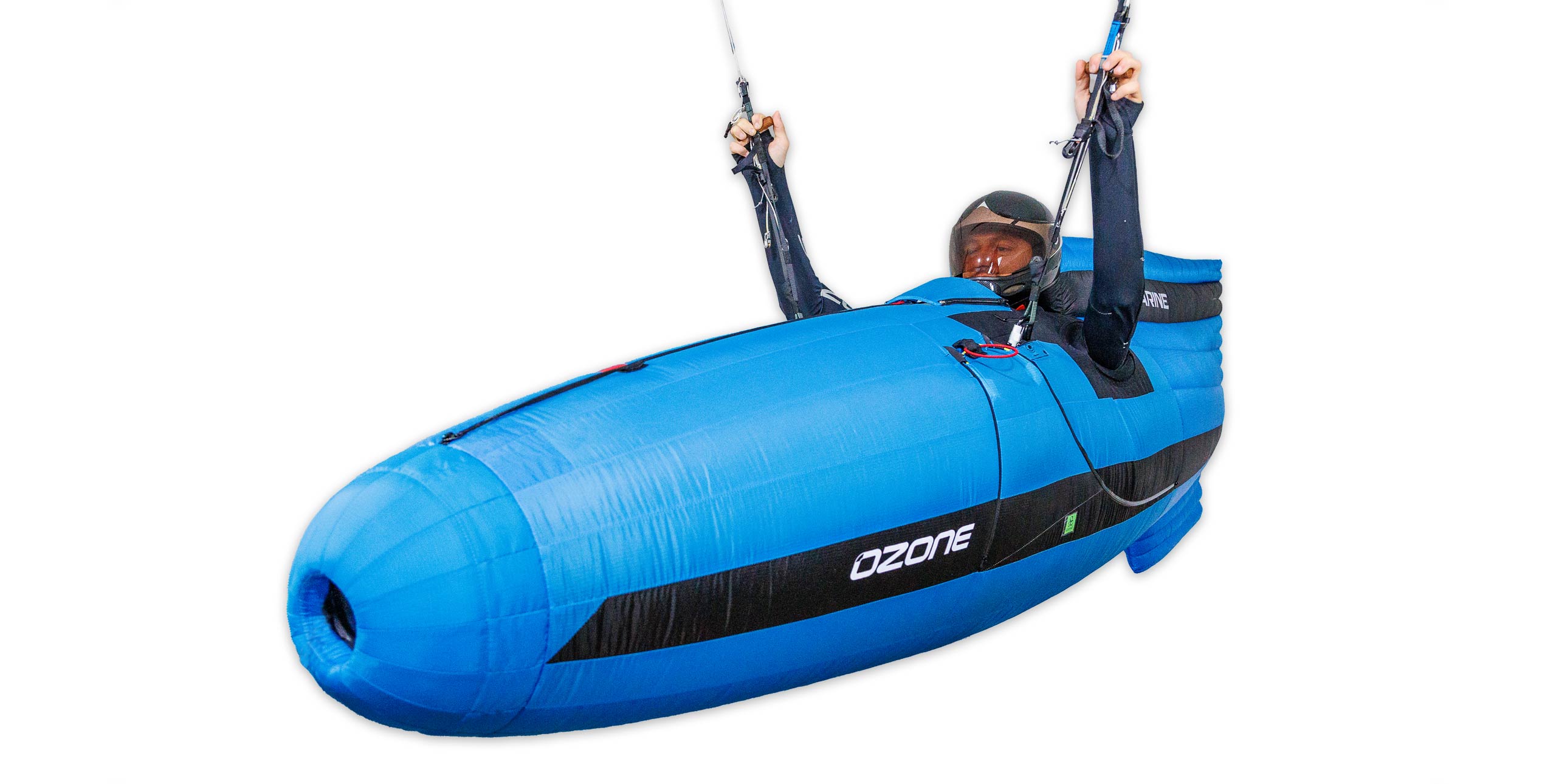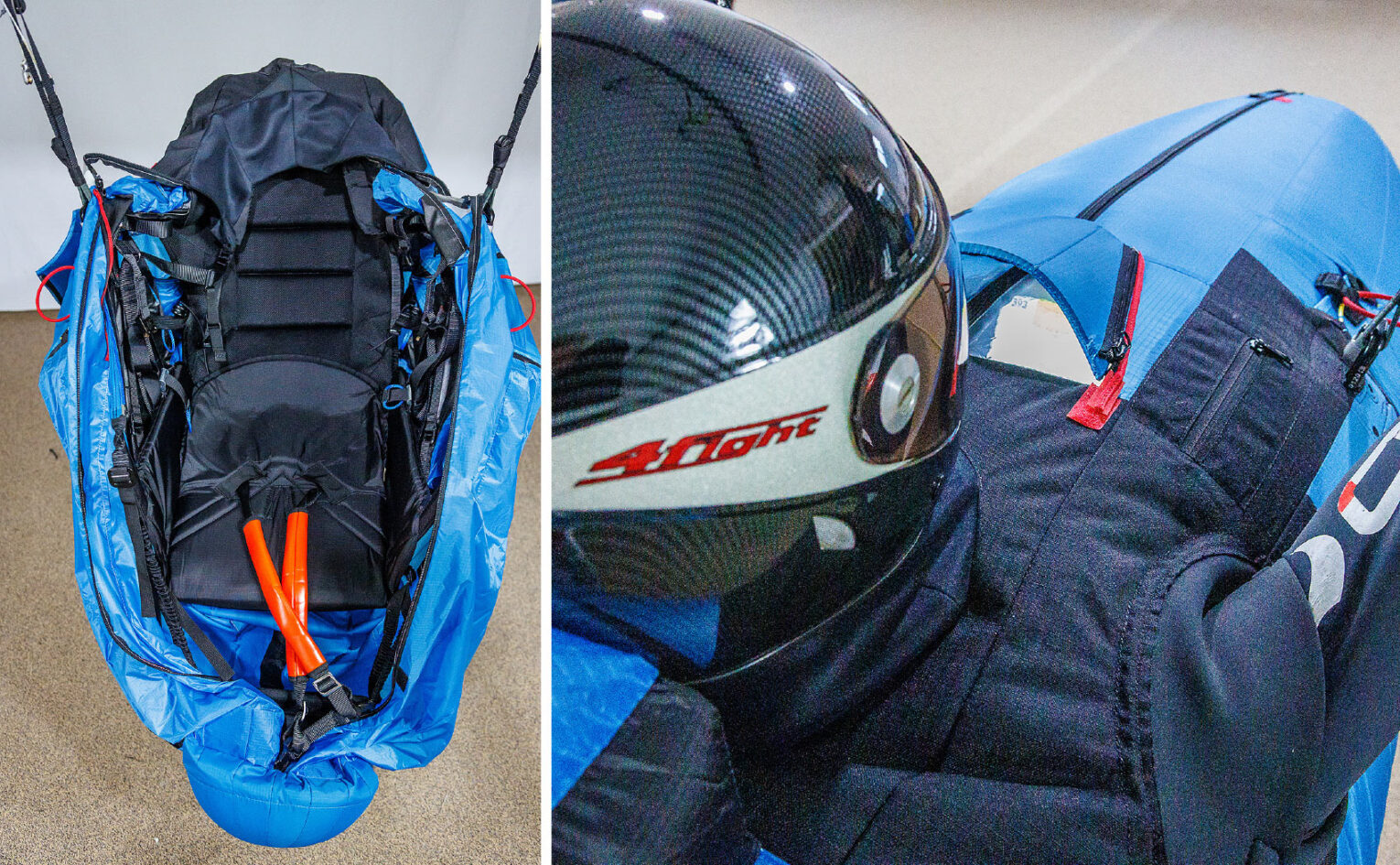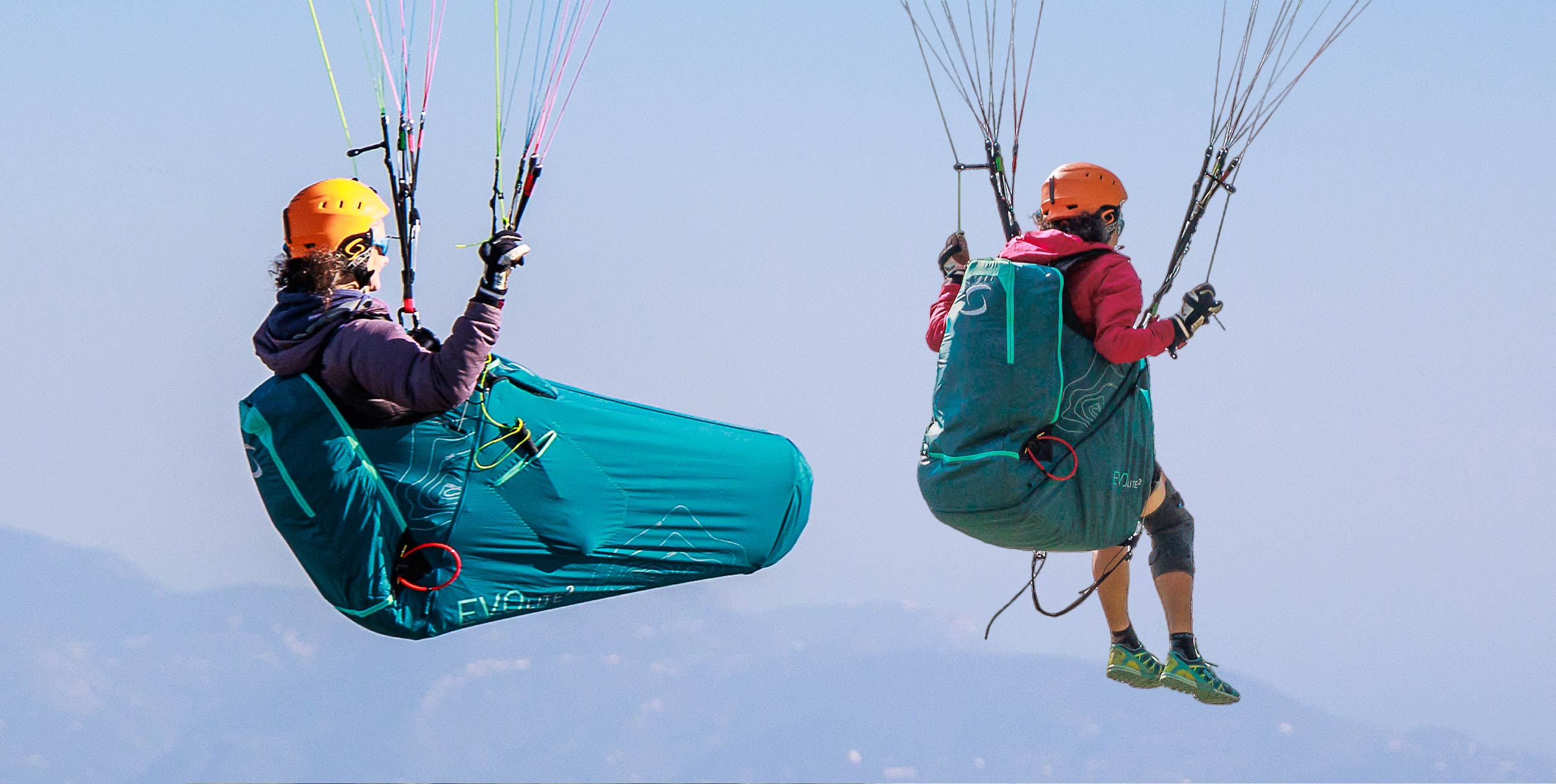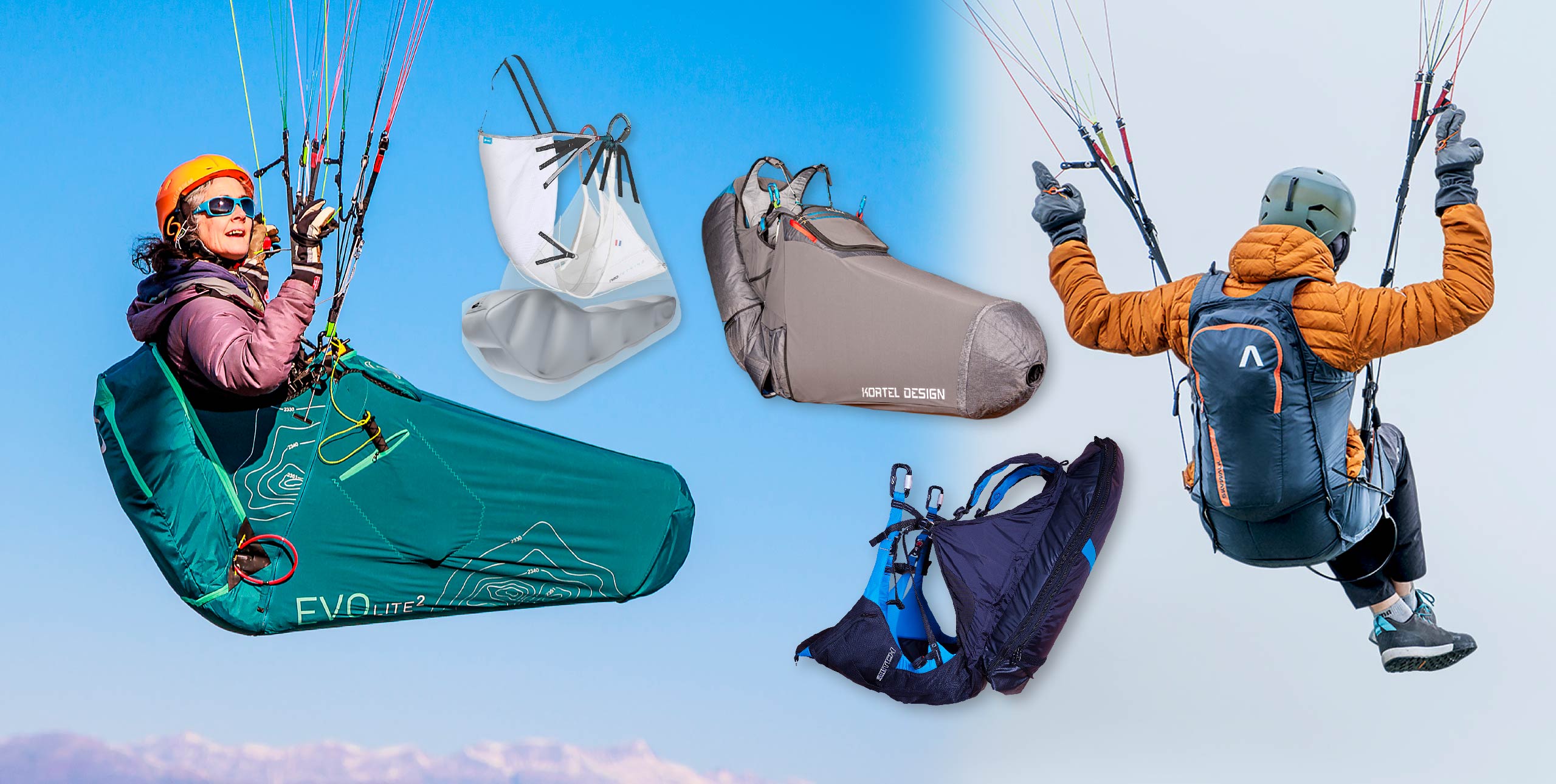
Hugh Miller finds out what this high-end competition harness is like for regular cross-country flying
The Submarine knows what it wants, and it’s not afraid to tell you. Since arriving in my life it’s insisted I replace my riser speed-system lines, demanded I relearn how to pack a paraglider bag, sniffed at my choice of instruments, sneered at my disorderly clip-in process, and (literally) creased up at my poor weightshift technique.
Yes, from unboxing to feeling comfortable in the air might take a solid ten hours of setting up and fiddling about but during winter, what else are you going to do? The dark evenings were lit up by the joy of sliding airtight zippers back and forth, adjusting buckles and having my partner hold a spirit level to my angle-of-dangle.
On the ground
The Submarine demands a level of discipline that’ll be frustrating as hell for hike-and-fly free spirits. After a few tangles, I learnt the value of packing away in an orderly fashion, concertina-ing the wing directly behind the Sub in take-off position, all lines clear and clean, then placing the Sub on top of the concertina bag and folding the wing around it. Then on launch the next day I could be confident everything was knot and twist-free. Fail to do this and you’ll quickly get wound up – literally – as the tail fairing says “non” to any attempts to unwind line twists or tease out knots.
Zipping and clipping-in takes around five minutes longer than with an Impress 4 or XR7. First, you have to ‘wear’ the harness, poking your arms through neoprene sleeves. Then it’s two clips for the leg loops, two zips to secure the main frontal storage compartment, four clips for the instrument deck, a zip for the neck closure, and two more zips for the aerodynamic fairing. Sounds a lot, but it isn’t if you’re organised.
Launch and in the air

Once you’ve tucked the fairing under an armpit to stop it flapping about in the wind, launching is straightforward. The foam nose cone can get caught between your legs if you’re groundhandling sideways, but otherwise, it’s no bother.
Zipping up in the air is smooth and easy, though it’s a bit of a reach down to the bottom of the pod. The pod rounds out satisfyingly, and then you’re gazing down a spherical cone, totally unaware of the enormous tail behind you. Visibility is not that different from other pods. What’s striking is how quiet the airflow is. At trim it’s like being on a tropical island with a gentle wafting breeze, and as you push bar, it’s just a gradual increase in wind noise. There’s no buffeting, and less volume. It’s like paragliding with the windows up.
How is it to thermal?
In moving air, there’s a little more roll than the Exoceat – perhaps because at 8kg, it’s a lot lighter? But it’s damped compared with the XR7 or Impress 4. You have to be much more disciplined in your thermalling style. I’m used to leaning hard into the turn with my inner hip, and lifting the outer foot up slightly to maintain roll. The Sub would crumple if you tried this.
Consistent foot positioning is needed to keep the spherical shape smooth, so you can’t effect much weightshift. You have to keep your arms higher, too, using wraps to stop your elbows from distorting the fabric. It is, as a friend put it, like learning all over again.
I found myself entering a “slippy” mindset, flying the wing a little faster, and aiming to be as smooth as possible.

Instrument window
The plastic instrument window is not great. It’s like peering through a tent window with a zip down the middle. Most comp pilots have supersized their instrument numbers or even changed to big tablets. I’ve opted for sticking my phone onto the top of the pod. Seb Ospina has flown his for 100 hours, and says, “I’m not sure it’s a harness for everyone. You have to be a fairly intuitive pilot who flies by feel and sight – it’s going to be no good for someone who relies on a lot of information from their instruments.”
The sandwich test
With most pods, you can grab your sandwich out of a pocket, stuff some in your face, then plonk half of it down inside the pod as your reach back for the brakes. With the Submarine, you have to unzip about 30 percent, reach into your front storage compartment (without really being able to see much of it), get your food out – but then there’s nowhere to put it. Unbelievably, Ozone didn’t build in a picnic table. I think I’m going to need to stick to small bars, accessible from the two small external zip pockets.
Performance difference
Pilots have talked about the “performance bonus”. Others have said it really helps in weak climbs – much more so than on glide. Seb has said he feels his climbing has improved a lot, putting this down to the increased roll instability as well as the streamlined shape. I thought I noticed a bit more added float when ridge soaring and in gentle climbs. Then I glided at trim with an XR7-equipped friend on identical wings, identical wing-loading, and noticed no difference at all!
The Ozone team say it always glided better on tests over the Exoceat even if only by a couple of metres. I expect, with parasitic drag going up exponentially, these gains will be best illustrated at high speeds which I rarely accelerate to flying XC.

The verdict
Will I keep it? Yes, for now. The Submarine has taught me to be more disciplined on launch, and that’s no bad thing. I enjoy the quiet, the slippy feel, and the improved sink rate in weak thermals. I’m not a competition pilot, but for long-distance flying in weak flatlands, I’m keen to see how the Submarine works. I fly from grassy hills, so fingers crossed I can take good care of it, too.
I won’t lie though, I will miss the stash-ability of open pods, and I do really want to keep my instruments accessible so I can zoom in and out on airspace. If I bust airspace because of this I’ll be straight back on my Impress 4. Overall though, yes the Submarine has been demanding, and I have complied so far, and been rewarded for it. And if it doesn’t help me set a new personal best this season, at least I’ve got something new to blame.
Manufacturer’s Specifications
Ozone say: “A low-drag, high-performance harness five years in development”
Use: Serious XC and competition flying
Pilot level: Advanced and competition pilots
Sizes: S, M, L
Pilot height range (cm): 160-176, 173-186, 183-194
Weight (kg): 8.15kg (M)
Load test max weight (kg): 120
Certification: EN
Review first published in Issue 239 May 2023











